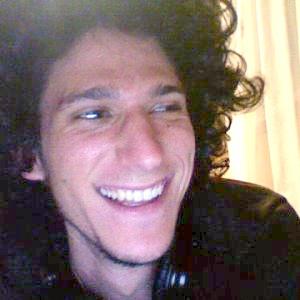
April is National Poetry Month, so we dedicate our April theme issue of in-House to the arts. Simply, we publish resident- or fellow-produced art in any medium, including but not limited to traditional media, music, photography, poetry, prose, film, dance, or any other form of artistic expression.
What My Parents Think I Do vs. What I Actually Do During Overnight Call
Jeremy Chapman, MD, psychiatry resident at Medical College of Wisconsin & Affiliated Hospitals
Atrophied Dreams & Mastectomy Shadows
Shirin Karimi, MD, internal medicine resident at Cambridge Health Alliance
Poodle Blue
Beatrice Preti, MD, internal medicine resident at Queen’s University School of Medicine
A Story of Artistic Reclamation
Michael Barbato, MD, pediatric oncology fellow at Johns Hopkins University / National Institutes of Health
My Allegiance
Daniela Hermelin, MD, transfusion medicine fellow at Saint Louis University School of Medicine
Pondering the Human Experience: A Quartet of Poems
Sarah V. Stelma, MD, orthopaedic surgery resident at Tufts University School of Medicine
I Seize
Jennifer Evan, MD, neurology resident at Johns Hopkins University School of Medicine
A Second Home
Zarir Ahmed, DO, internal medicine resident at Saint Louis University School of Medicine
T-Cell
Aliye Runyan, MD, family planning fellow at University of Utah School of Medicine
The Telling
Rebecca E MacDonell-Yilmaz, MD, MPH, pediatric hematology-oncology fellow at Hasbro Children’s Hospital of Brown University
in-House Readers’ Choice Award
Jeremy Chapman, MD
 Jeremy Chapman-Gould lives in Milwaukee with his amazing wife and two beautiful daughters. He’s super-excited to be starting his child & adolescent psychiatry fellowship at the Medical College of Wisconsin on 7/1/19.
Jeremy Chapman-Gould lives in Milwaukee with his amazing wife and two beautiful daughters. He’s super-excited to be starting his child & adolescent psychiatry fellowship at the Medical College of Wisconsin on 7/1/19.
He graduated from Duke University in 2005 with a BS in psychology and a neuroscience concentration. After college, he spent several years doing various things, most memorably spending a year in Tokyo, teaching English and creating fun children’s educational videos.
Then … he somehow wound up in medical school. He graduated from Rush Medical College in 2016, where he had heavily integrated video into his training. That solidified his professional calling: To harness the fantastic power of videos and psychiatry to help kids think, feel, and connect with the world.
Why are the arts in medicine important to you?
I think we’re all missing out: Art is such a large part of so many of our patient’s lives. Whether they enjoy making art or consuming art, people’s interactions with the arts are reflective of their inner experience of the world. Art provides clues and glimpses into what’s important to a person, and we can utilize art to enhance the care of our patients.
Specifically, in the field of psychiatry and psychotherapy, art is fodder for personal insight and exploration. I ask my patients what music they listen to, which shows they watch, which Instagram accounts they follow, etc. I also invite and encourage patients to bring in their own poetry, sketches, short stories, and photographs to incorporate into our work.
My professional goal is to open a child psychiatry practice with an attached video studio. We can then produce videos, music, and other works of art to build a supportive and lively community of patients and families. Wouldn’t that be awesome?
Why do you make videos?
My father always had a camcorder in his hand. We have a large wall of videotapes that basically tell the story of our entire childhood. When I became old enough to hold a video camera, my friends and I spent hours and hours putting on silly costumes, inventing characters, and making improvised scenes. We laughed the whole time, and those videos became the foundation of some of my closest friendships.
Throughout all of my education and jobs, I’ve kinda been the default “video guy,” which I think has allowed me to approach my work from a unique angle. My video background has particularly influenced my career as a physician. Telepsychiatry, video self-modeling, YouTube/Vimeo communities, screen-sharing, video apps, and goalproving all present huge opportunities to enrich and augment medication and psychotherapy treatment modalities.
The future is video, baby!
